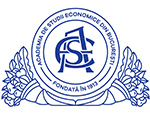Articles on Issue Theme

Adrian-Ioan DAMOC
Academia de Studii Economice din Bucureşti
In spite of having received relatively little media attention since it came into effect on January 1st, 2015, the Eurasian Economic Union (EEU) is not without its controversies. Analysts have been split on what exactly the nature and purpose of this new union really are, such as: a geopolitical tool for Vladimir Putin to further his agenda of re-establishing Russia’s sphere of influence in Eurasia; an intergovernmental entity with genuine chances of becoming an economic centre of gravity and an important regional agent; a project seeking to act as a counterweight to the European Union but with slim chances of succeeding due to the stark differences between its member states. There is, of course, a certain interest towards how the European Union (EU) and EEU will interact: whether there shall be a rivalry between the two, whether they can find areas of cooperation to create a transcontinental bridge between Europe and Asian countries, or whether the relationships between the two will bear the influence of the differences between EU’s and Russia’s positions on an array of topics, such as energy relations, the situation in Ukraine or Russia’s support for Bashar al-Assad’s regime in Syria, the latter being opposed by the EU. The following paper seeks to create an outline of the Eurasian Economic Union, in comparison with the European Union, and based on this outline to analyze the possible scenarios in which relations between the two can develop.
ŒCONOMICA no. 4/2015
Keywords: European Union, European Economic Union, Central Asia, trade, geopolitics, energy
JEL: F50, F51, F53, F59
The Eurasian Economic Union: Outlooks on the Development of Relations with the European Union [Uniunea Economică Eurasiatică: privire asupra dezvoltării relaţiilor cu Uniunea Europeană]
Select Issue:
Archive
Octavian-Dragomir JORA
Academia de Studii Economice din Bucureşti

Mara Andreea TUDOR
University of Chicago

Cătălin MURARAŞU
Academia de Studii Economice din Bucureşti

Ramona Iulia DIEACONESCU
Academia de Studii Economice din Bucureşti

Maria GHEORGHE (NIŢU)
Academia de Studii Economice din Bucureşti

Sorin-Nicolae CURCĂ
Academia Română

Revista ŒCONOMICA

Authors

